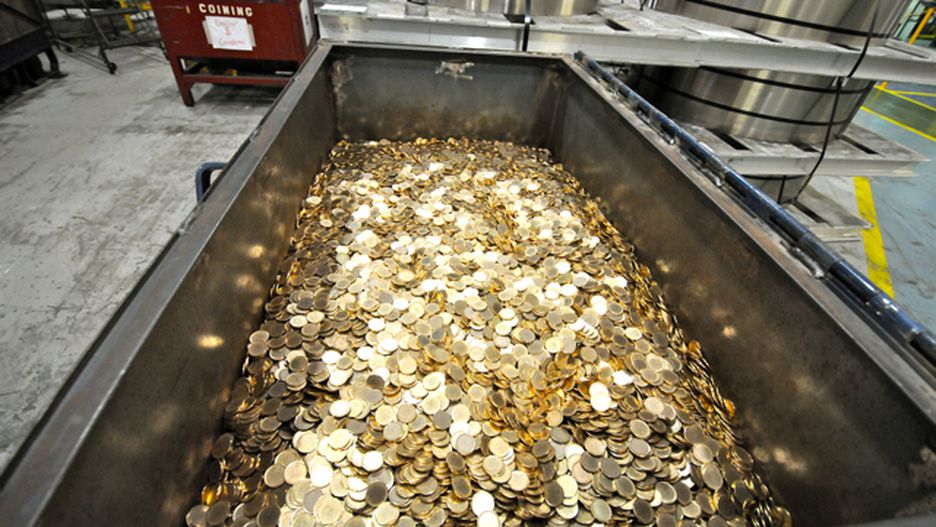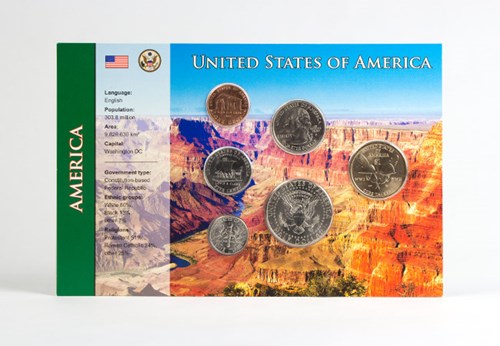Five Fun Facts about US coins for American Independence Day!
Today is American Independence Day and we thought there could be no better way to join in the 4th of July celebrations than to share five fun facts you might not know about US coinage!
1) The reverses are struck upside down.
Did you know that on US coins, the reverses are stuck upside down? This is arguably due to the fact that originally, the Mint wanted to differentiate their coins from their medals. The medals’ faces are struck with the same orientation as they are supposed to be worn, and therefore when rotated, still show an upright image.

Upside down reverses. Credit: coincommunity.com
2) By law, US coin designs must give “an impression emblematic of liberty.”
The USA, as a nation, are well known for being one of the most patriotic countries in the world. They uphold strong values of liberty and freedom, from everyday life to sporting events and even on their coinage! As a result of this, US coin designers are legally required to display an impression emblematic of liberty in their coin designs.

Statue of Liberty, a true symbol of patriotism.
3) The coinage act of 1792, establishing the U.S. Mint, made defacing, counterfeiting, or embezzling of coins by Mint employees punishable by death.
The death penalty is still legal in 31 US states and the coinage act of 1792 is still in place today. This states that any Mint employee caught defacing, counterfeiting or embezzling coins can be, in theory, sentenced to death. Whether or not this would be upheld in today’s court of law is debatable.

Defaced coin. Credit: pinterest.co.uk/crumley1065/the-coin-box
4) Origin of the “buck”.
This well-known slang term for an American dollar is thought to have originated in the early US frontier days when the hide of a male deer (a buck) was common currency, due to the scarcity of coinage. The term has since been adopted into everyday language and certainly seems to be here to stay for a while!

Buck. Credit: state.nj.us
5) The U.S. Mint’s coin production has grown over 131,000,000% since production first started in 1793.
The US Mint’s operation has grown and advanced greatly since the first mintage in 1972, when production consisted of 11,178 copper cents. Today the Mint produces an average of 14.7 million coins per day. The first mint in Philadelphia actually used horses to drive the machinery, whereas today, much more modern techniques are used and greater numbers of coins can be produced.

So there we have it, five fun facts about US coinage! Whether they come in handy at your next quiz night, give you something interesting to bring up in conversation, or even spark your interest in collecting US coins, we hope you’ve enjoyed finding out more about US coins.
Own the US Coin Pack today!
If this has sparked your interest in US coins, why not own the coin pack containing 6 US coins from the 1 Cent to the 1 Dollar? Each coin is protectively encapsulated in display packaging with an image of the iconic Grand Canyon and additional information about the USA and their coinage.


Nice fun article, but just on a point of accuracy: – strictly the “Obverse” of a coin is the front (or heads), and the “Reverse” is the back (or tails). The Obverse is upwards on US coins, it’s the Reverse that’s upside down. You will hear Numismatists refer to this as “Coin alignment” (or rotation). Both sides struck upright (as in UK) are said, for the reason’s you’ve given, to be struck in “Medal alignment” (or rotation). You got me thinking (and that’s why I enjoy your blog!): “Coin alignment” hasn’t been used (apart from some rare errors) by the UK since Victorian times.
Thanks Jim, a great fact there which we will get updated on the blog 🙂
I would like to purchase one don’t know how can you help
Hi John, the US coin pack is available to purchase here: https://www.changechecker.org/USCoinPack